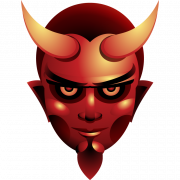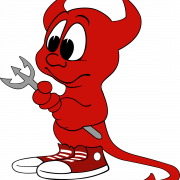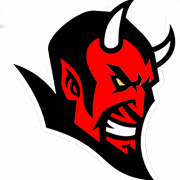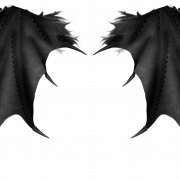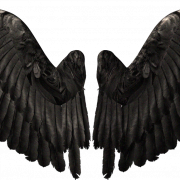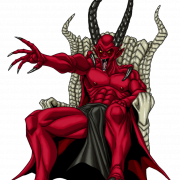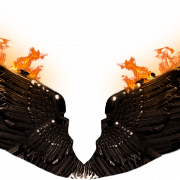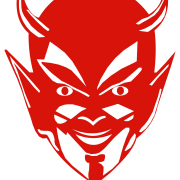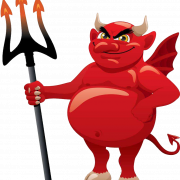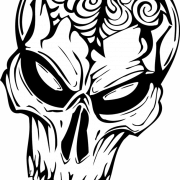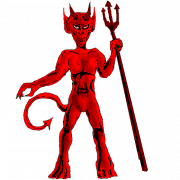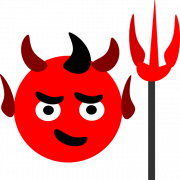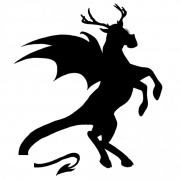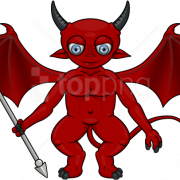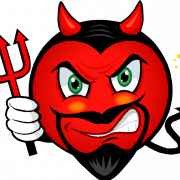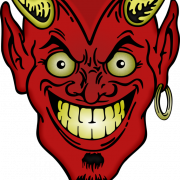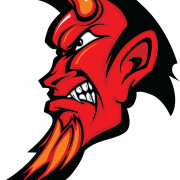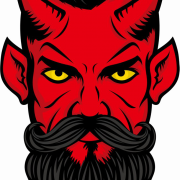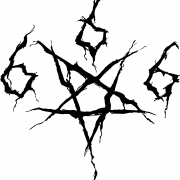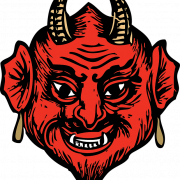Download top and best high-quality free Devil PNG Transparent Images backgrounds available in various sizes. To view the full PNG size resolution click on any of the below image thumbnail.
License Info: Creative Commons 4.0 BY-NC
The personification of evil as it is conceived in many cultures and theological traditions is referred to as a devil. It’s said to be the objectification of a hostile and destructive power.
Beyond that, it is a manifestation of evil. It is impossible to give a specific definition of any complexity that will encompass all of the traditions. It’s interesting to think about the devil through the eyes of the many civilizations and faiths that include the devil as a component of their mythos.
The history of this notion is intertwined with theology, mythology, psychology, art, and literature, with each tradition retaining its own validity and development. It has been given many various names and qualities throughout history, including Satan, Lucifer, Beelzebub, Mephistopheles, and Iblis. It is shown as blue, black, or red; it is depicted with and without horns on its head, and so forth. When devil figures are employed in advertising and on candy wrappers, for example, the notion of the devil is often taken seriously, although not always.
The word devil comes from the Middle English devel, which comes from the Old English dofol, which is an early Germanic derivation of the Latin diabolus. This was derived from the Greek: diábolos, “slanderer,” from v diabállein, “to slander,” from diá, “across, through,” and bállein, “to hurl,” most likely similar to the Sanskrit gurate, “he lifts up.”
Jeffrey Burton Russell explores the different interpretations and challenges that are faced when using the term devil in his book The Devil: Perceptions of Evil from Antiquity to Primitive Christianity. He doesn’t pretend to define the word in a broad sense, but he does describe the word’s restricted usage in his book—limited to “minimize this problem” and “for the purpose of clarity.” Russell uses the term “devil” in this book to refer to “the personification of evil found in a range of civilizations,” as opposed to the term “Satan,” which he reserves for the figure in Abrahamic religions.
Henry Ansgar Kelly explores many issues and meanings that he has faced in utilizing terminology such as devil and Satan, etc., in the Introduction to his book Satan: A Biography. While he does not provide a broad definition, he does state in his book that “whenever diabolos are employed as the proper name of Satan,” he uses “small capitals” to indicate it.
The Oxford English Dictionary includes a number of definitions for the term “devil,” all of which are backed up by citations: “Devil” may refer to Satan, the supreme spirit of evil, or one of Satan’s emissaries or demons who populate Hell, or one of the spirits who possess a demonic person; “devil” may refer to one of the “malignant deities” feared and worshiped by “heathen people,” a demon, a malignant being of superhuman powers; figuratively, “devil” may be applied to a wicked person, or play.
Download Devil PNG images transparent gallery.
- Devil Face PNG Free Download
Resolution: 800 × 800
Size: 178 KB
Image Format: .png
Download
- Red Devil PNG Clipart
Resolution: 1155 × 1280
Size: 296 KB
Image Format: .png
Download
- Devil Face PNG Picture
Resolution: 800 × 749
Size: 90 KB
Image Format: .png
Download
- Red Devil PNG Free Download
Resolution: 679 × 633
Size: 139 KB
Image Format: .png
Download
- Devil Silhouette PNG
Resolution: 900 × 1113
Size: 85 KB
Image Format: .png
Download
- Devil PNG File
Resolution: 668 × 720
Size: 21 KB
Image Format: .png
Download
- Devil Trident PNG Clipart
Resolution: 640 × 1280
Size: 41 KB
Image Format: .png
Download
- Devil Trident PNG Free Download
Resolution: 1746 × 2400
Size: 194 KB
Image Format: .png
Download
- Devil Horns Transparent
Resolution: 1024 × 1024
Size: 134 KB
Image Format: .png
Download
- Devil Face PNG Free Image
Resolution: 2100 × 2100
Size: 234 KB
Image Format: .png
Download
- Devil Face PNG File
Resolution: 1000 × 1061
Size: 201 KB
Image Format: .png
Download
- Devil Silhouette PNG Image
Resolution: 2400 × 1170
Size: 67 KB
Image Format: .png
Download
- Devil Wings
Resolution: 4093 × 2078
Size: 266 KB
Image Format: .png
Download
- Devil
Resolution: 1246 × 1118
Size: 857 KB
Image Format: .png
Download
- Devil PNG HD Image
Resolution: 790 × 857
Size: 844 KB
Image Format: .png
Download
- Devil Wings PNG
Resolution: 1979 × 683
Size: 317 KB
Image Format: .png
Download
- Devil PNG Pic
Resolution: 786 × 1017
Size: 547 KB
Image Format: .png
Download
- Devil Logo
Resolution: 650 × 741
Size: 287 KB
Image Format: .png
Download
- Devil PNG Download Image
Resolution: 710 × 572
Size: 264 KB
Image Format: .png
Download
- Devil Wings PNG Image
Resolution: 944 × 528
Size: 493 KB
Image Format: .png
Download
- Devil Face
Resolution: 3150 × 3830
Size: 241 KB
Image Format: .png
Download
- Red Devil
Resolution: 896 × 1076
Size: 38 KB
Image Format: .png
Download
- Devil Trident
Resolution: 876 × 1001
Size: 523 KB
Image Format: .png
Download
- Devil PNG High Quality Image
Resolution: 699 × 971
Size: 20 KB
Image Format: .png
Download
- Devil PNG Images
Resolution: 650 × 939
Size: 433 KB
Image Format: .png
Download
- Devil Trident PNG
Resolution: 800 × 800
Size: 102 KB
Image Format: .png
Download
- Devil Logo PNG
Resolution: 2400 × 976
Size: 63 KB
Image Format: .png
Download
- Devil PNG Image File
Resolution: 719 × 1110
Size: 336 KB
Image Format: .png
Download
- Devil Tail
Resolution: 763 × 932
Size: 300 KB
Image Format: .png
Download
- Devil Trident PNG Image
Resolution: 693 × 720
Size: 58 KB
Image Format: .png
Download
- Devil Silhouette
Resolution: 1024 × 538
Size: 24 KB
Image Format: .png
Download
- Devil Silhouette Transparent
Resolution: 934 × 534
Size: 68 KB
Image Format: .png
Download
- Devil Silhouette PNG Clipart
Resolution: 1440 × 1800
Size: 580 KB
Image Format: .png
Download
- Devil Silhouette PNG Free Download
Resolution: 934 × 534
Size: 86 KB
Image Format: .png
Download
- Devil Wings Transparent
Resolution: 990 × 540
Size: 543 KB
Image Format: .png
Download
- Devil Silhouette PNG Picture
Resolution: 1160 × 1032
Size: 22 KB
Image Format: .png
Download
- Devil Horns
Resolution: 842 × 507
Size: 304 KB
Image Format: .png
Download
- Devil Logo PNG Image
Resolution: 2400 × 2400
Size: 31 KB
Image Format: .png
Download
- Devil PNG Photo
Resolution: 2400 × 2243
Size: 247 KB
Image Format: .png
Download
- Devil Trident Transparent
Resolution: 851 × 406
Size: 148 KB
Image Format: .png
Download
- Devil PNG Image HD
Resolution: 640 × 624
Size: 247 KB
Image Format: .png
Download
- Devil PNG
Resolution: 1920 × 1597
Size: 35 KB
Image Format: .png
Download
- Devil Horns PNG
Resolution: 792 × 552
Size: 318 KB
Image Format: .png
Download
- Red Devil PNG
Resolution: 2313 × 1813
Size: 169 KB
Image Format: .png
Download
- Devil Logo Transparent
Resolution: 2400 × 2400
Size: 132 KB
Image Format: .png
Download
- Devil PNG Image
Resolution: 1598 × 2222
Size: 92 KB
Image Format: .png
Download
- Devil Face PNG
Resolution: 909 × 717
Size: 136 KB
Image Format: .png
Download
- Devil Logo PNG Clipart
Resolution: 1280 × 544
Size: 497 KB
Image Format: .png
Download
- Devil Face PNG Image
Resolution: 850 × 850
Size: 1073 KB
Image Format: .png
Download
- Devil Silhouette PNG Free Image
Resolution: 898 × 980
Size: 46 KB
Image Format: .png
Download
- Devil Silhouette PNG File
Resolution: 894 × 980
Size: 48 KB
Image Format: .png
Download
- Devil Transparent
Resolution: 747 × 1070
Size: 327 KB
Image Format: .png
Download
- Devil Face Transparent
Resolution: 817 × 800
Size: 110 KB
Image Format: .png
Download
- Red Devil PNG Image
Resolution: 990 × 731
Size: 449 KB
Image Format: .png
Download
- Devil PNG Clipart
Resolution: 2037 × 2400
Size: 547 KB
Image Format: .png
Download
- Devil Horns PNG Image
Resolution: 1024 × 1024
Size: 22 KB
Image Format: .png
Download
- Devil PNG Free Download
Resolution: 823 × 1280
Size: 87 KB
Image Format: .png
Download
- Devil PNG Picture
Resolution: 1024 × 1024
Size: 111 KB
Image Format: .png
Download
- Devil Silhouette PNG HD Image
Resolution: 900 × 980
Size: 30 KB
Image Format: .png
Download
- Devil Logo PNG Free Download
Resolution: 1200 × 1066
Size: 69 KB
Image Format: .png
Download
- Devil Tail PNG
Resolution: 700 × 557
Size: 75 KB
Image Format: .png
Download
- Red Devil Transparent
Resolution: 990 × 990
Size: 391 KB
Image Format: .png
Download
- Devil Face PNG Clipart
Resolution: 650 × 1095
Size: 565 KB
Image Format: .png
Download
- Devil Silhouette PNG Pic
Resolution: 897 × 1004
Size: 64 KB
Image Format: .png
Download
- Devil PNG Free Image
Resolution: 642 × 720
Size: 327 KB
Image Format: .png
Download
